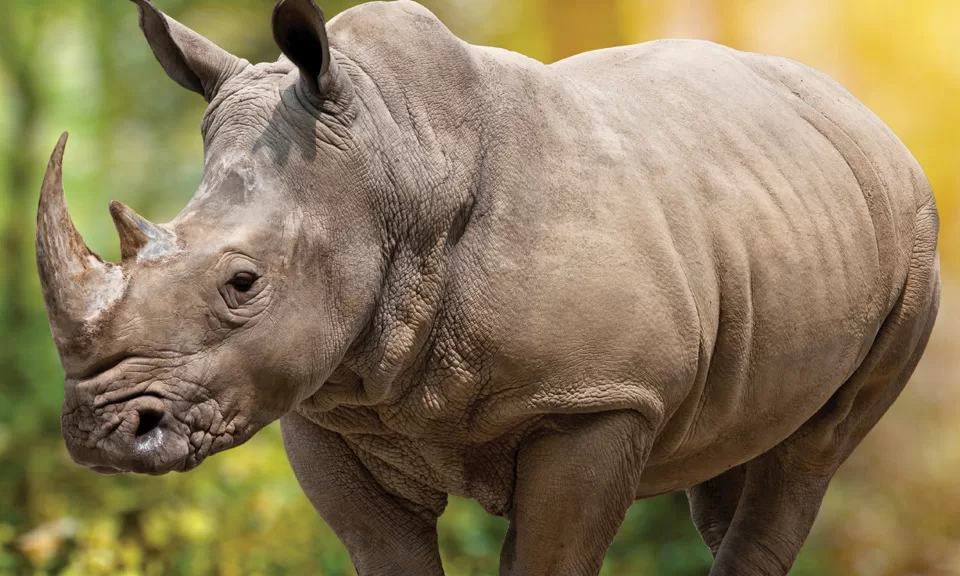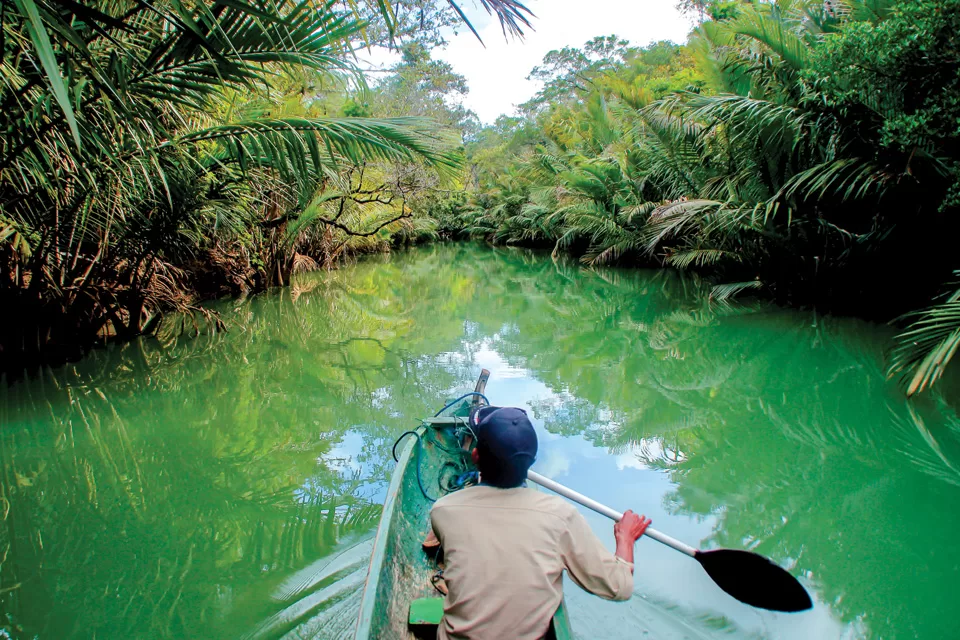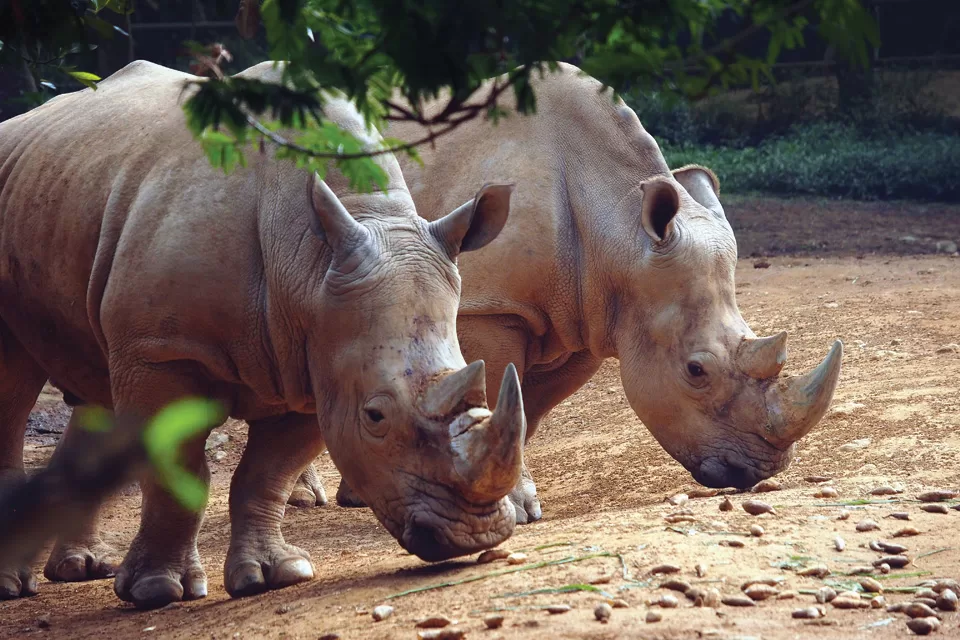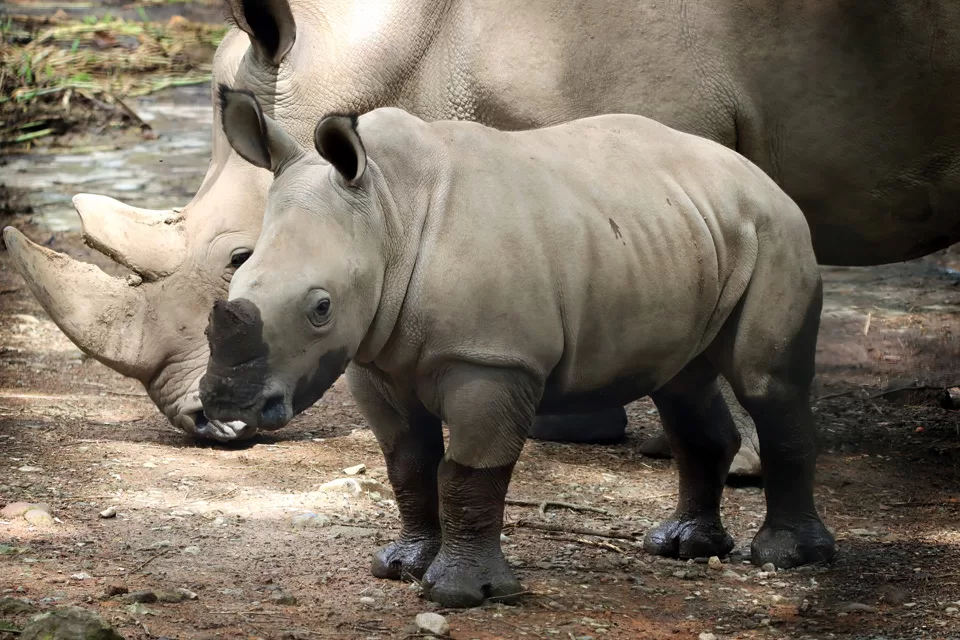
Javan rhinos are the most threatened of the five rhino species, with only around 76 individuals that live only in Ujung Kulon National Park in Java, Indonesia. Javan rhinos once lived throughout northeast India and Southeast Asia. Vietnam’s last Javan rhino was poached in 2010.
The Javan rhino is a critically endangered species. There are two species of rhino in Indonesia: the Javan rhino and the Sumatran rhino. The Javan rhino is the rarest of the five remaining rhino species globally.
Javan rhinos were killed by trophy hunters during colonial times. They were also killed as agricultural pests and for their horn, a highly prized commodity in traditional Asian medicine. Poaching remains an ever-present threat.
This species is a dusky grey color and has a single horn of up to about 10 inches. Its skin has a number of loose folds, giving the appearance of armor plating. The Javan rhino is very similar in appearance to the closely-related greater one-horned rhinoceros, but has a much smaller head and less apparent skin folds.
The Javan rhinoceros eats diverse plant species, especially their shoots, twigs, young foliage and fallen fruit. Most of the plants favored by the species grow in sunny areas in forest clearings, shrubland and other vegetation types with no large trees. The rhino knocks down saplings to reach its food and grabs it with its prehensile upper lip. It is the most adaptable feeder of all the rhino species.
The Javan rhinoceros can live around 30 – 45 years in the wild. It historically inhabited dense lowland rainforest, wet grasslands, and vast floodplains at forest-edges. It is mostly
solitary, except for courtship and rearing off-spring, though groups may occasionally congregate near wallows and salt licks. Aside from humans, whom they usually avoid, adult rhinos have no natural predators in their range. Very small juveniles may be preyed upon, if left unsupervised, typically by leopards, Sumatran tigers or, rarely, crocodiles.
Rhinos share their habitat with a multitude of other plant and animal species. The protection of rhinos also helps protect the ecosystems on which they depend, as well as other species, including elephants, buffalo, large carnivores, and antelopes that share their habitat.



